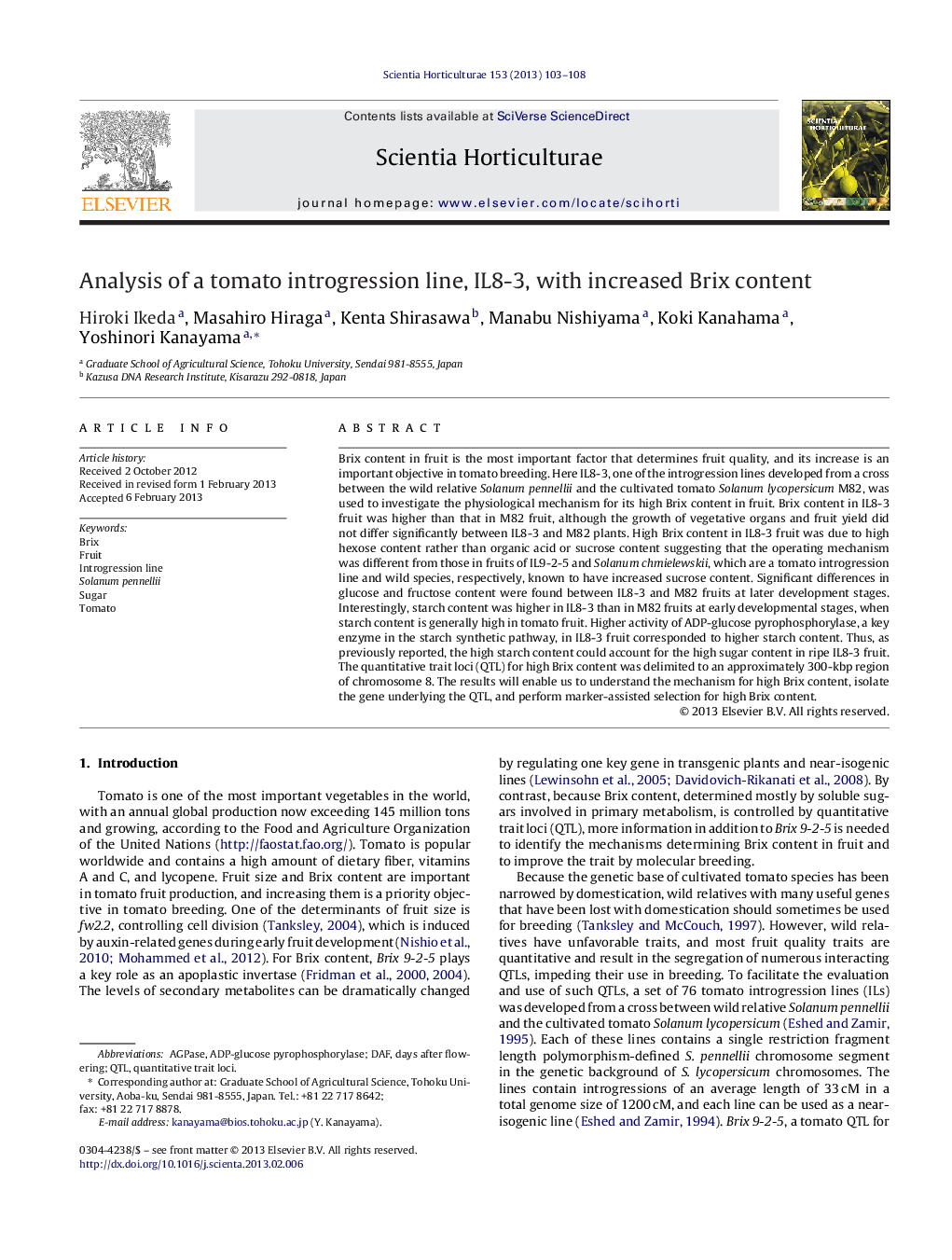| Article ID | Journal | Published Year | Pages | File Type |
|---|---|---|---|---|
| 4567202 | Scientia Horticulturae | 2013 | 6 Pages |
Brix content in fruit is the most important factor that determines fruit quality, and its increase is an important objective in tomato breeding. Here IL8-3, one of the introgression lines developed from a cross between the wild relative Solanum pennellii and the cultivated tomato Solanum lycopersicum M82, was used to investigate the physiological mechanism for its high Brix content in fruit. Brix content in IL8-3 fruit was higher than that in M82 fruit, although the growth of vegetative organs and fruit yield did not differ significantly between IL8-3 and M82 plants. High Brix content in IL8-3 fruit was due to high hexose content rather than organic acid or sucrose content suggesting that the operating mechanism was different from those in fruits of IL9-2-5 and Solanum chmielewskii, which are a tomato introgression line and wild species, respectively, known to have increased sucrose content. Significant differences in glucose and fructose content were found between IL8-3 and M82 fruits at later development stages. Interestingly, starch content was higher in IL8-3 than in M82 fruits at early developmental stages, when starch content is generally high in tomato fruit. Higher activity of ADP-glucose pyrophosphorylase, a key enzyme in the starch synthetic pathway, in IL8-3 fruit corresponded to higher starch content. Thus, as previously reported, the high starch content could account for the high sugar content in ripe IL8-3 fruit. The quantitative trait loci (QTL) for high Brix content was delimited to an approximately 300-kbp region of chromosome 8. The results will enable us to understand the mechanism for high Brix content, isolate the gene underlying the QTL, and perform marker-assisted selection for high Brix content.
► A tomato introgression line, IL8-3, showed high Brix content in fruit. ► It was due to high hexose content rather than organic acid or sucrose content. ► Starch content and AGPase activity was high in IL8-3 fruit. ► The QTL for high Brix content was delimited to an approximately 300-kbp region.
